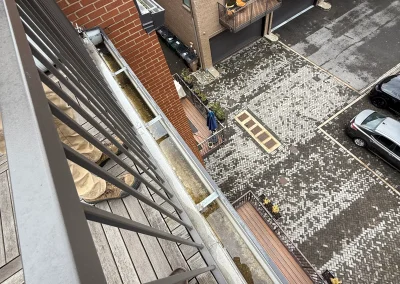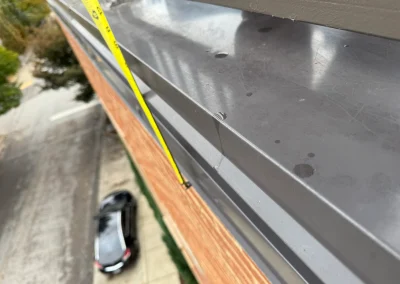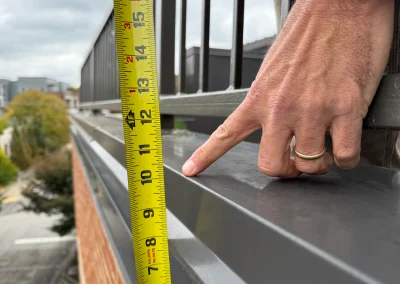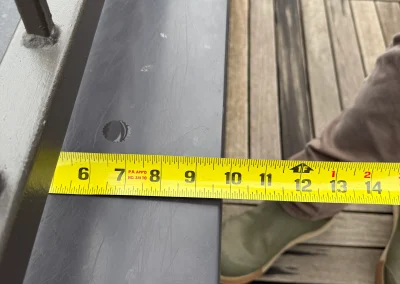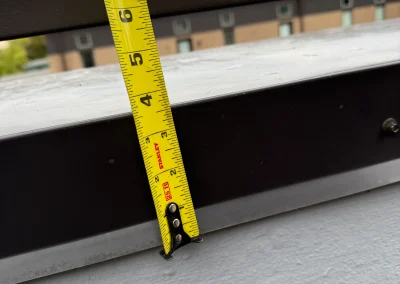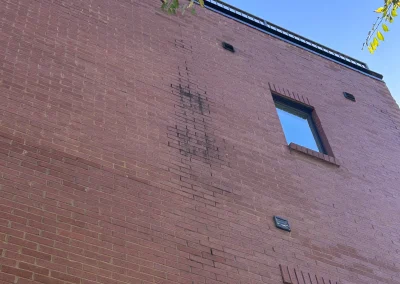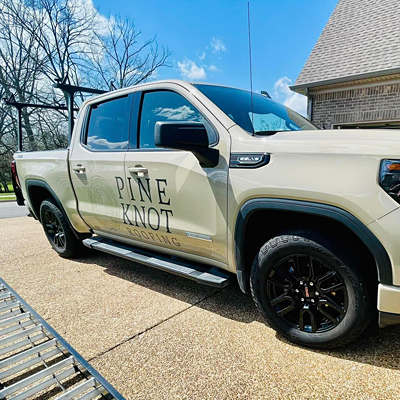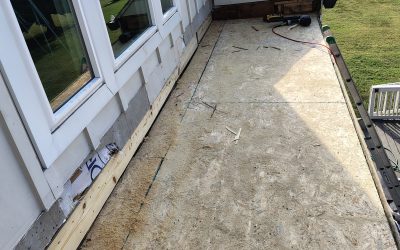We were recently called out to a three-story brick home in the Germantown neighborhood of downtown Nashville. The homeowner had noticed water damage appearing behind the drywall in a third-floor bathroom. After a partner company, Tennessee Water & Fire, removed sections of drywall, they discovered moisture intrusion coming from behind the exterior wall.
Upon inspection, our team traced the source to the rooftop deck coping system — the metal cap that covers and protects the top edge of the parapet wall. Directly above the affected interior wall, we found an open joint in the coping overlap (visible in the photos). Water was collecting on the flat surface of the deck ledge, seeping into that unsealed gap, and tracking behind the brick veneer and moisture barrier over time. The result was gradual rot in the sheathing and framing behind the wall.
Proposed Scope of Work
To correct the issue and prevent further water infiltration, our roof repair plan includes:
Initial diagnostic roof repair
-
- Clean and prep the coping joint area.
- Apply a high-grade exterior sealant bead directly over the visible gap.
- Perform a controlled water test to confirm whether this joint is the active leak source.
Permanent coping re-seal (if confirmed leak source)
-
- Remove the affected coping section.
- Reinstall the coping with proper three-bead caulking beneath the overlap and a fourth bead along the exterior edge — creating four layers of waterproof protection per industry standards.
- Inspect adjacent seams for similar deficiencies and re-seal as needed.
Findings & Notes
-
The existing coping joint shows only a single top-side bead of caulk; no sealant was applied beneath the overlap.
-
Measured coping dimensions: approximately 13 inches face height and 8–9 inches deck width.
-
Because this system sits above living space, even small breaches can allow prolonged moisture migration behind the masonry.












